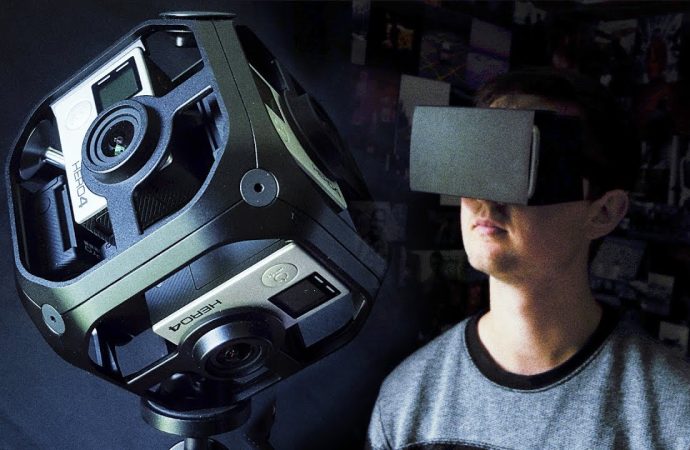Introduction Virtual Reality (VR) has revolutionized numerous industries, and the film industry is no exception. As VR technology continues to advance, it is increasingly being integrated into various stages of film production, from pre-visualization to post-production. This article explores how VR is enhancing film production techniques, providing filmmakers with innovative tools and methods to create
Introduction
Virtual Reality (VR) has revolutionized numerous industries, and the film industry is no exception. As VR technology continues to advance, it is increasingly being integrated into various stages of film production, from pre-visualization to post-production. This article explores how VR is enhancing film production techniques, providing filmmakers with innovative tools and methods to create more immersive and engaging cinematic experiences.
The Evolution of VR in Film Production
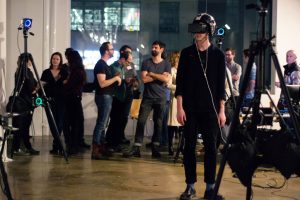
Image by: Google.com
- Early Adoption and Experimentation
The integration of VR in film production began with experimental projects and short films. Filmmakers and technologists saw the potential of VR to create immersive environments and started exploring its applications. Early adopters used VR to create 360-degree videos, allowing viewers to experience scenes from multiple perspectives. These experiments laid the groundwork for more sophisticated uses of VR in film production.
- Advancements in VR Technology
As VR technology advanced, so did its applications in film production. Improved hardware, such as VR headsets and motion capture systems, and advanced software tools enabled filmmakers to push the boundaries of traditional filmmaking. These advancements have made VR an invaluable tool in various aspects of film production, from pre-visualization to post-production.
VR in Pre-Production
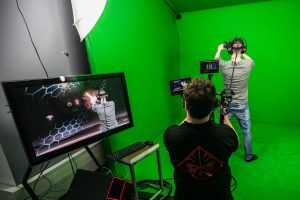
Image by: Google.com
- Pre-Visualization
Pre-visualization, or pre-vis, is a crucial step in the filmmaking process, allowing filmmakers to plan and visualize complex scenes before actual production begins. VR has taken pre-vis to a new level by providing a fully immersive environment where filmmakers can explore and refine their ideas. Using VR, directors and cinematographers can step into a virtual version of the set, experiment with camera angles, and adjust lighting in real-time. This level of immersion helps them make more informed decisions and reduces the need for costly reshoots during actual production.
- Storyboarding
Traditional storyboarding involves creating a series of sketches to represent different scenes in a film. With VR, filmmakers can create interactive storyboards that provide a more dynamic and engaging way to visualize the narrative. These VR storyboards allow filmmakers to experience the flow of the story and make adjustments as needed, resulting in a more cohesive and polished final product.
- Location Scouting
Location scouting is another area where VR has made a significant impact. Instead of physically traveling to different locations, filmmakers can use VR to explore potential filming sites from the comfort of their studio. High-resolution 360-degree images and videos of real-world locations can be viewed in VR, allowing filmmakers to assess the suitability of a location without the need for extensive travel.
VR in Production
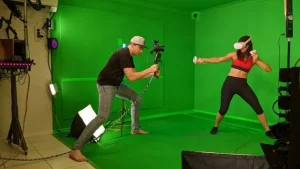
Image by: Google.com
- Virtual Sets
One of the most exciting applications of VR in film production is the creation of virtual sets. Using VR, filmmakers can design and build intricate sets in a virtual environment. These virtual sets can be used in combination with green screen technology to create seamless and realistic backgrounds. This approach not only saves time and money but also allows for greater creative freedom, as filmmakers are no longer limited by physical constraints.
- Motion Capture
Motion capture technology has been a staple in the film industry for years, but VR has taken it to new heights. With VR, actors can perform in a virtual environment, interacting with virtual objects and characters in real-time. This level of immersion enhances the quality of the motion capture data and results in more realistic and believable performances.
- Real-Time Collaboration
VR enables real-time collaboration between filmmakers, regardless of their physical location. Directors, producers, and other key members of the production team can meet in a virtual environment, discuss ideas, and make decisions on the spot. This level of collaboration streamlines the production process and ensures that everyone is on the same page.
VR in Post-Production
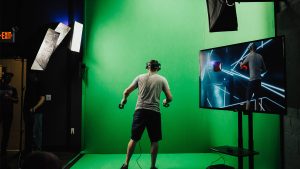
Image by: Google.com
- Editing and Visual Effects
VR has also made its mark in the post-production phase, particularly in editing and visual effects. VR editing tools allow filmmakers to view and manipulate footage in a 3D space, providing a more intuitive and immersive editing experience. This approach makes it easier to identify and fix issues, resulting in a higher quality final product. In terms of visual effects, VR enables artists to create and integrate complex effects with greater precision. By working in a 3D environment, visual effects artists can see how their work will interact with the rest of the scene, leading to more seamless and realistic effects.
- Sound Design
Sound design is a critical component of any film, and VR has opened up new possibilities in this area as well. Using VR, sound designers can create and manipulate audio in a 3D space, resulting in a more immersive and realistic soundscape. This approach allows for greater creativity and precision in sound design, enhancing the overall cinematic experience.
The Future of VR Film Production
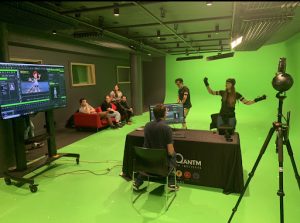
Image by: Google.com
As VR technology continues to evolve, its applications in film production are likely to expand even further. Future advancements in VR hardware and software will provide filmmakers with even more powerful tools and techniques, enabling them to create increasingly immersive and engaging films.
- AI and Machine Learning
The integration of AI and machine learning with VR has the potential to revolutionize film production. AI algorithms can analyze vast amounts of data to provide filmmakers with insights and recommendations, while machine learning can automate certain aspects of the production process. This combination of technologies will streamline workflows and allow filmmakers to focus on the creative aspects of their work.
- Interactive and Immersive Storytelling
VR has the potential to transform storytelling by making it more interactive and immersive. In the future, viewers may be able to step into a film and interact with the characters and environment, creating a personalized and engaging experience. This level of interactivity will open up new possibilities for filmmakers and provide audiences with a new way to experience stories.
Conclusion
VR is enhancing film production techniques in numerous ways, from pre-visualization and storyboarding to motion capture and sound design. By providing filmmakers with immersive and innovative tools, VR is helping to create more engaging and realistic cinematic experiences. As technology continues to advance, the applications of VR in film production are likely to expand even further, paving the way for a new era of filmmaking.

